The Art of ElectronicsPaul Horowitz, Winfield Hill At long last, here is the thoroughly revised and updated third edition of the hugely successful The Art of Electronics. It is widely accepted as the best single authoritative book on electronic circuit design. In addition to new or enhanced coverage of many topics, the third edition includes 90 oscilloscope screenshots illustrating the behavior of working circuits, dozens of graphs giving highly useful measured data of the sort that is often buried or omitted in datasheets but which you need when designing circuits, and 80 tables (listing some 1650 active components), enabling intelligent choice of circuit components by listing essential characteristics (both specified and measured) of available parts. The new Art of Electronics retains the feeling of informality and easy access that helped make the earlier editions so successful and popular. It is an indispensable reference and the gold standard for anyone, student or researcher, professional or amateur, who works with electronic circuits. 3D Printing with MatterControlJoan Horvath, Rich Cameron In 3D Printing With MatterControl, Joan Horvath and Rich Cameron, the team behind Mastering 3D Printing, explain step-by-step how to use the MatterControl program, which allows you to control many common types of 3D printers (including both cartesian and delta style machines). 3D Printing With MatterControl can stand alone, or it can be a companion to Mastering 3D Printing to show you how to install, configure, and use best practices with your printer and printing software. The book includes both step by step software walkthroughs and case studies with typical 3D printed objects.
Whether you are a "maker" or a teacher of makers, 3D Printing with MatterControl will show you how to get the most out of your printer with the new standard for open source 3D printing software. While there are books available on 3D printers, and even a few on software to make models for printers, there are few good sources covering the software that actually controls these printers. MatterControl is emerging as the leading open source software for 3D printers, and 3D Printing With MatterControl covers this new standard in this brief book.
What you’ll learn 3D model basics and slicing the modelControlling the printer and using G codeWorking with different materials and different printing situationsUsing MatterControl plug-insUsing your 3D printer in the classroomBasic post-processing and troubleshootingWho this book is for Makers, students, teachers, hackerspace leaders, and anyone who wants step-by-step guidance on using MatterControl 3D printer software. iOS Application Development with OpenCV 3Joseph Howse Create five mobile apps, and explore the world through photography and computer visionAbout This Book Efficiently harness iOS and OpenCV to capture and process high-quality images at high speedDevelop photographic apps and augmented reality apps quickly and easilyDetect, recognize, and morph faces and objectsWho This Book Is For
If you want to do computational photography and computer vision on Apple's mobile devices, then this book is for you. No previous experience with app development or OpenCV is required. However, basic knowledge of C++ or Objective-C is recommended. What You Will Learn Use Xcode and Interface Builder to develop iOS appsObtain OpenCV's standard modules, and build extra modules from sourceControl all the parameters of the iOS device's cameraCapture, save, and share photos and videosAnalyze colors, shapes, and textures in ordinary and specialized photographsBlend and compare images to create special photographic effects and augmented reality toolsDetect faces and morph facial featuresRecognize collectible coins and grade their conditionIn Detail
iOS Application Development with OpenCV 3 enables you to turn your smartphone camera into an advanced tool for photography and computer vision. Using the highly optimized OpenCV library, you will process high-resolution images in real time. You will locate and classify objects, and create models of their geometry. As you develop photo apps and augmented reality apps, you will gain a general understanding of the iOS frameworks and developer tools, plus a deep understanding of the camera and image APIs. After completing the book's five projects, you will be a well-rounded iOS developer with valuable experience in OpenCV. OpenCV Computer Vision with PythonJoseph Howse Learn to capture videos, manipulate images, and track objects with Python using the OpenCV Library
OverviewSet up OpenCV, its Python bindings, and optional Kinect drivers on Windows, Mac or UbuntuCreate an application that tracks and manipulates facesIdentify face regions using normal color images and depth images
In Detail
Computer Vision can reach consumers in various contexts via webcams, camera phones and gaming sensors like Kinect. OpenCV's Python bindings can help developers meet these consumer demands for applications that capture images, change their appearance and extract information from them, in a high-level language and in a standardized data format that is interoperable with scientific libraries such as NumPy and SciPy.
"OpenCV Computer Vision with Python" is a practical, hands-on guide that covers the fundamental tasks of computer vision—capturing, filtering and analyzing images—with step-by-step instructions for writing both an application and reusable library classes.
"OpenCV Computer Vision with Python" shows you how to use the Python bindings for OpenCV. By following clear and concise examples you will develop a computer vision application that tracks faces in live video and applies special effects to them. If you have always wanted to learn which version of these bindings to use, how to integrate with cross-platform Kinect drivers and and how to efficiently process image data with NumPy and SciPy then this book is for you.
What you will learn from this bookInstall OpenCV and related software such as Python, NumPy, SciPy, OpenNI, and SensorKinect—all on Windows, Mac or UbuntuCapture, display, and save photos and real-time videosHandle window events and input events using OpenCV's HighGui module or PygameUnderstand OpenCV's image format and how to perform efficient operations on OpenCV images with NumPy and SciPyApply "curves" and other color transformations to simulate the look of old photos, movies or video gamesApply an effect only to edges in an imageCopy and resize segments of an imageApply an effect only to certain depths in an image by using data from a depth sensor such as KinectTrack faces, eyes, noses and mouths by using prebuilt datasetsTrack arbitrary objects by creating original datasets
Approach
A practical, project-based tutorial for Python developers and hobbyists who want to get started with computer vision with OpenCV and Python.
Who this book is written for
OpenCV Computer Vision with Python is written for Python developers who are new to computer vision and want a practical guide to teach them the essentials. Some understanding of image data (for example, pixels and color channels) would be beneficial. At a minimum you will need access to at least one webcam. Certain exercises require additional hardware like a second webcam, a Microsoft Kinect or an OpenNI-compliant depth sensor such as the Asus Xtion PRO. Pragmatic Thinking and Learning: Refactor Your WetwareAndy Hunt Together we'll journey together through bits of cognitive and neuroscience, learning and behavioral theory. You'll discover some surprising aspects of how our brains work, and see how you can beat the system to improve your own learning and thinking skills.
In this book you'll learn how to:
Use the Dreyfus Model of Skill Acquisition to become more expertLeverage the architecture of the brain to strengthen different thinking modesAvoid common "known bugs" in your mindLearn more deliberately and more effectivelyManage knowledge more efficiently
Software development happens in your head. Not in an editor, IDE, or design tool. It's time to take a pragmatic approach to thinking and learning, and start to refactor-and redesign-your brain. | Fuzzy Logic for Embedded Systems ApplicationsAhmad Ibrahim Fuzzy Logic for Embedded Systems Applications, by a recognized expert in the field, covers all the basic theory relevant to electronics design, with particular emphasis on embedded systems, and shows how the techniques can be applied to shorten design cycles and handle logic problems that are tough to solve using conventional linear techniques. All the latest advances in the field aree discussed and practical circuit design examples presented.
Fuzzy logic has been found to be particularly suitable for many embedded control applications. The intuitive nature of the fuzzy-based system design saves engineers time and reduces costs by shortening product development cycles and making system maintenance and adjustments easier. Yet despite its wide acceptance-and perhaps because of its name-it is still misunderstood and feared by many engineers. There is a need for embedded systems designers-both hardware and software-to get up to speed on the principles and applications of fuzzy logic in order to ascertain when and how to use them appropriately.
Fuzzy Logic for Embedded Systems Applications provides practical guidelines for designing electronic circuits and devices for embedded systems using fuzzy-based logic. It covers both theory and applications with design examples.
* Unified approach to fuzzy electronics from an engineering point of view
* Easy to follow with plenty of examples
* Review and evaluation of free resources Controller Area Network ProjectsDogan Ibrahim Erscheinungsjahr: 2011
Abmessung: 23,5 cm
Von Ibrahim, Dogan
The Controller Area Network (CAN) was originally developed to be used as a vehicle data bus system in passenger cars. Today, CAN controllers are available from over 20 manufacturers, and CAN is finding applications in other fields, such as medical, aerospace, process control, automation, and so on.
This book is written for students, for practising engineers, for hobbyists, and for everyone else who may be interested to learn more about the CAN bus and its applications.
You will learn how to design microcontroller based CAN bus nodes, build a CAN bus, develop high-level programs, and then exchange data in real-time over the bus. You will also learn how to build microcontroller hardware and interface it to LEDs, LCDs, and A/D converters.
The Controller Area Network (CAN) was originally developed to be used as a vehicle data bus system in passenger cars. Today, CAN controllers are available from over 20 manufacturers, and CAN is finding applications in other fields, such as medical, aerospace, process control, automation, and so on.
This book is written for students, for practising engineers, for hobbyists, and for everyone else who may be interested to learn more about the CAN bus and its applications.
The aim of this book is to teach you the basic principles of CAN networks and in addition the development of microcontroller based projects using the CAN bus. In summary, this book enables the reader to:
- Learn the theory of the CAN bus used in automotive industry
- Learn the principles, operation, and programming of microcontrollers
- Design complete microcontroller based projects using the C language
- Develop complete real CAN bus projects using microcontrollers
- Learn the Practical Digital Signal Processing using MicrocontrollersDogan Ibrahim This text on Digital Signal Processing (DSP) reflects the growing importance of discrete time signals and their use in everyday microcontroller based systems. The author presents the basic theory of DSP with minimum mathematical treatment and teaches the reader how to design and implement DSP algorithms using popular PIC microcontrollers. The author's approach is practical and the book is backed with many worked examples and tested and working microcontroller programs. The book features:
- Revision of the number theory used in DSP applications
- Examples of currently available DSP development systems
- Revision of the popular mikroC Pro for PIC language used in the book
- Time and frequency domain analysis and processing of discrete time signals using Matlab, including digital convolution and Discrete Fourier Transforms
- Design of practical digital FIR filters using standard microcontrollers
- Design of practical digital IIR filters using standard microcontrollers
- Brief introduction to dedicated DSP chips
The book should be ideal reading for students at all levels and for the practising engineers who may want to design and develop intelligent DSP based systems.
Undergraduate students should find the theory and the practical projects invaluable during their final year projects. Similarly, postgraduate students should be able to develop advanced DSP based projects with the aid of the book. Raspberry Pi Advanced ProgrammingDogan Ibrahim This book is about advanced programming of the Raspberry Pi computer using the Python programming language. The book explains in simple terms and with examples: how to configure the Raspberry Pi computer; how to install and use the Linux operating system and the desktop; how to write advanced programs using the Python programming language; how to use graphics in our programs and how to develop hardware based projects using the Raspberry Pi.
The book starts with an introduction to the Raspberry Pi computer and covers the topics of purchasing all the necessary accessories and installing and operating the Linux operating system in command mode. The network interface of the RPi is explained in simple steps, demonstrating how the computer can be accessed remotely from a desktop or a laptop computer.
The remaining parts of the book cover the Python programming language in detail, including advanced topics such as operating system calls, multitasking, interprocess synchronization and interprocess communication techniques. The important topic of network programming using UDP and TCP protocols is described with working examples. The Tkinter graphical user interface module (GUI) is described in detail with example widgets and programs.
The last part of the book includes hardware projects based on using the advanced programming topics such as multitasking and interprocess communication techniques. All the projects given in the book have been fully tested and are working. Complete program listings of all projects are provided with detailed explanations. Learning NumPy ArrayIvan Idris Supercharge your scientific Python computations by understanding how to use the NumPy library effectivelyAbout This Book Improve the performance of calculations with clean and efficient NumPy codeAnalyze large data sets using statistical functions and execute complex linear algebra and mathematical computationsPerform complex array operations in a simple mannerWho This Book Is For
This book is for programmers, scientists, or engineers, who have basic Python knowledge and would like to be able to do numerical computations with Python. What You Will Learn Install NumPy and discover its arrays and featuresPerform data analysis and complex array operations with NumPyAnalyze time series and perform signal processingUnderstand NumPy modules and explore the scientific Python ecosystemImprove the performance of calculations with clean and efficient NumPy codeAnalyze large data sets using statistical functions and execute complex linear algebra and mathematical computationsIn Detail
NumPy is an extension of Python, which provides highly optimized arrays and numerical operations. NumPy replaces a lot of the functionality of Matlab and Mathematica specifically vectorized operations, but in contrast to those products is free and open source. In today's world of science and technology, it is all about speed and flexibility.
This book will teach you about NumPy, a leading scientific computing library. This book enables you to write readable, efficient, and fast code, which is closely associated to the language of mathematics. Save thousands of dollars on expensive software, while keeping all the flexibility and power of your favorite programming language.
You will learn about installing and using NumPy and related concepts. At the end of the book we will explore related scientific computing projects. This book will give you a solid foundation in NumPy arrays and universal functions. Learning NumPy Array will help you be productive with NumPy and write clean and fast code. NumPy Beginner's Guide - Second EditionIvan Idris An action packed guide using real world examples of the easy to use, high performance, free open source NumPy mathematical library
OverviewPerform high performance calculations with clean and efficient NumPy codeAnalyze large data sets with statistical functionsExecute complex linear algebra and mathematical computations
In Detail
NumPy is an extension to, and the fundamental package for scientific computing with Python. In today's world of science and technology, it is all about speed and flexibility. When it comes to scientific computing, NumPy is on the top of the list.
NumPy Beginner's Guide will teach you about NumPy, a leading scientific computing library. NumPy replaces a lot of the functionality of Matlab and Mathematica, but in contrast to those products, is free and open source.
Write readable, efficient, and fast code, which is as close to the language of mathematics as is currently possible with the cutting edge open source NumPy software library. Learn all the ins and outs of NumPy that requires you to know basic Python only. Save thousands of dollars on expensive software, while keeping all the flexibility and power of your favourite programming language.You will learn about installing and using NumPy and related concepts. At the end of the book we will explore some related scientific computing projects. This book will give you a solid foundation in NumPy arrays and universal functions. Through examples, you will also learn about plotting with Matplotlib and the related SciPy project. NumPy Beginner's Guide will help you be productive with NumPy and have you writing clean and fast code in no time at all.
What you will learn from this bookInstall NumPyNumPy arraysUniversal functionsNumPy matricesNumPy modulesPlot with MatplotlibTest NumPy codeRelation to SciPy
Approach
The book is written in beginner’s guide style with each aspect of NumPy demonstrated with real world examples and required screenshots.
Who this book is written for
If you are a programmer, scientist, or engineer who has basic Python knowledge and would like to be able to do numerical computations with Python, this book is for you. No prior knowledge of NumPy is required. |
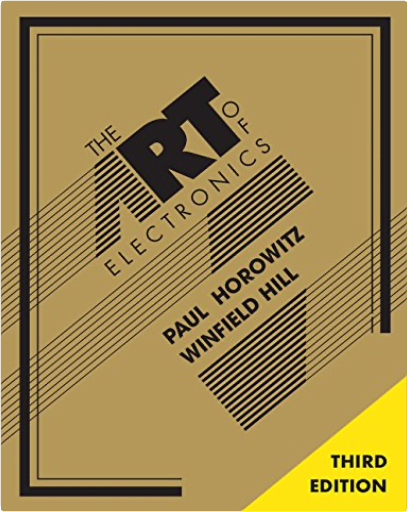
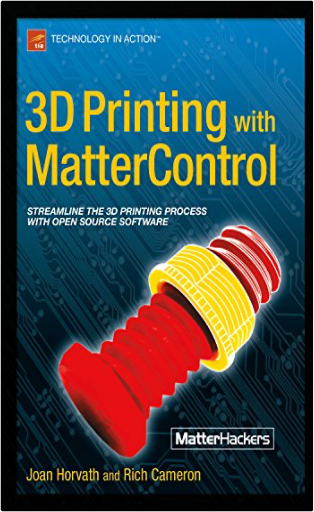
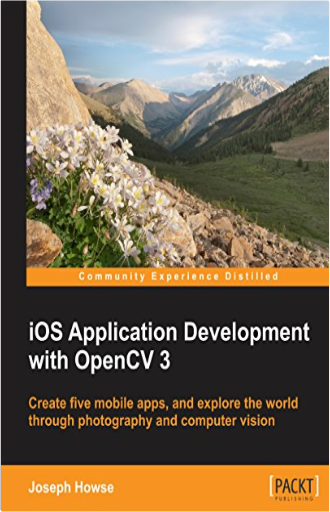
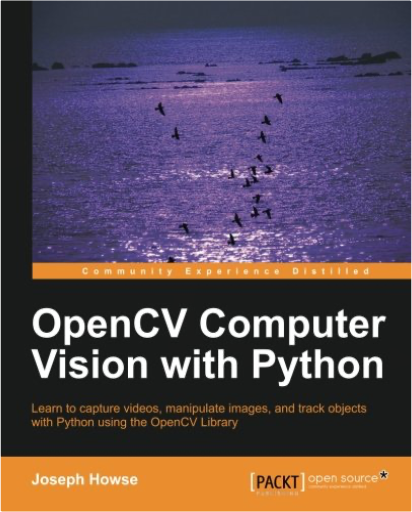
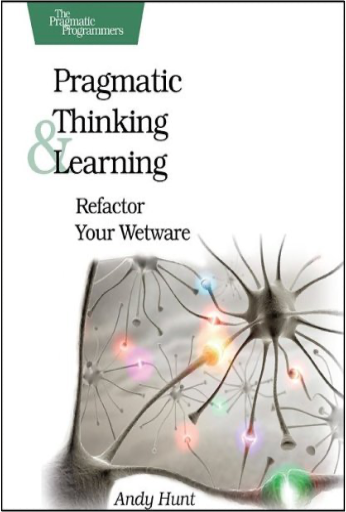
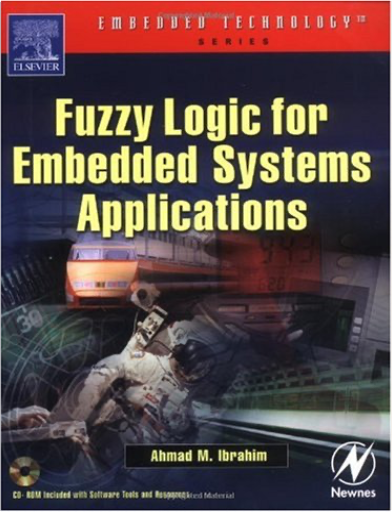
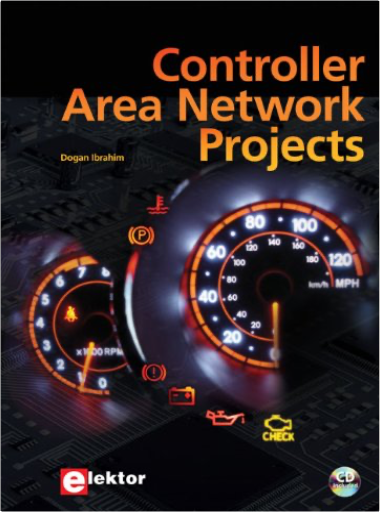
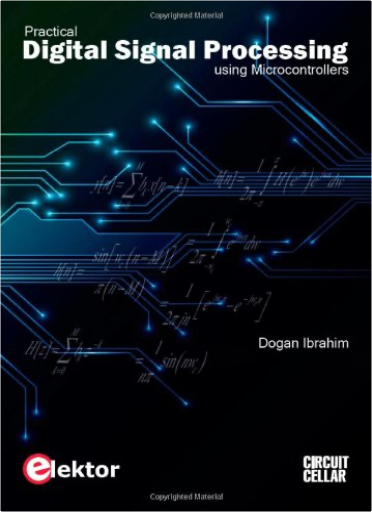
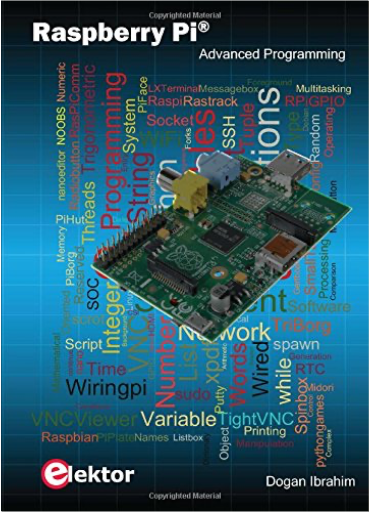
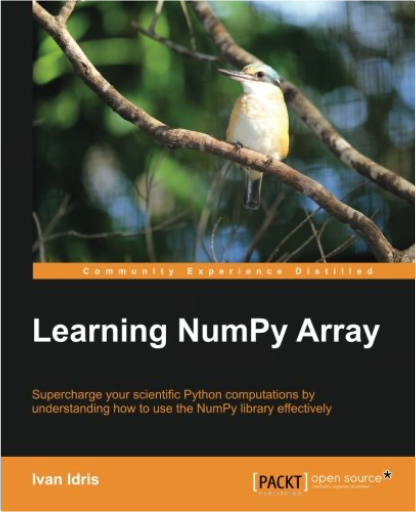
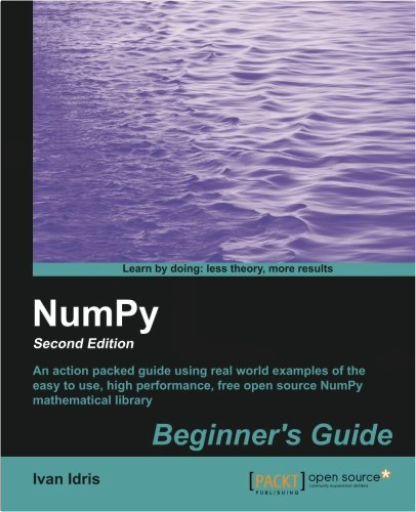


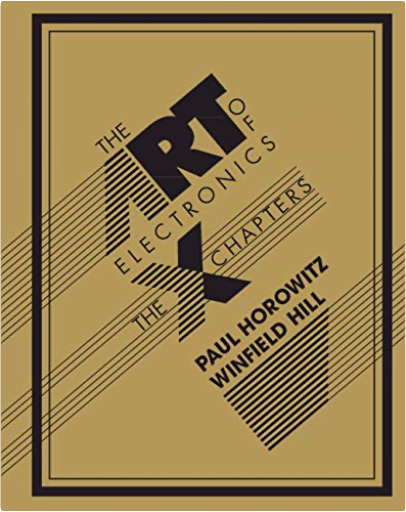
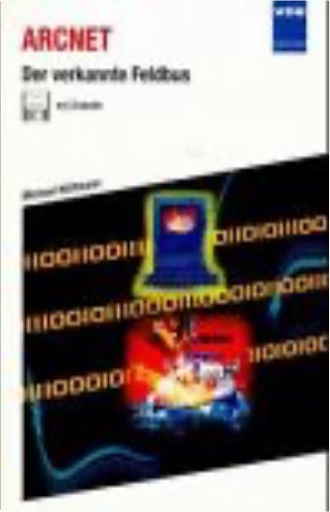
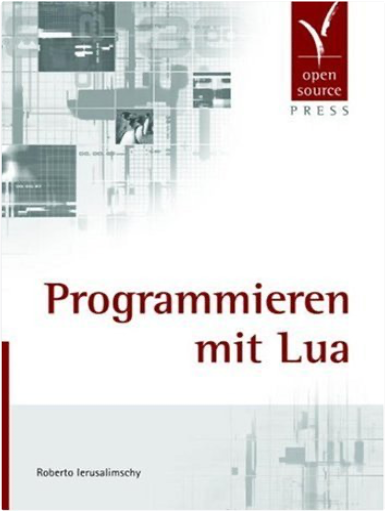
 Made with Delicious Library
Made with Delicious Library